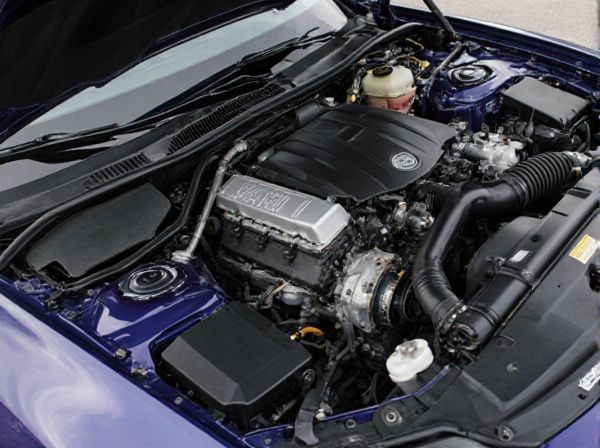
Photo illustration: Naturally Aspirated vs Turbocharged
Turbocharged engines deliver increased power and efficiency by forcing more air into the combustion chamber, enhancing performance under various driving conditions. Naturally aspirated engines rely on atmospheric pressure for air intake, offering smoother throttle response and simpler maintenance. Your choice depends on whether you prioritize raw power and fuel economy or consistent, predictable driving feel.
Table of Comparison
| Feature | Naturally Aspirated Engine | Turbocharged Engine |
|---|---|---|
| Power Output | Moderate, based on engine displacement | Higher, increased by forced air intake |
| Fuel Efficiency | Generally lower at high RPMs | Improved, due to better air-fuel mixture |
| Response Time | Immediate throttle response | Turbo lag causes slight delay |
| Complexity | Simple design, fewer components | Complex system with turbocharger and intercooler |
| Maintenance | Lower cost, easier upkeep | Higher cost, requires specialized care |
| Engine Longevity | Typically longer lifespan | Potentially reduced due to higher stress |
| Cost | Lower initial price | Higher upfront and repair costs |
Introduction to Engine Types
Naturally aspirated engines rely solely on atmospheric pressure to draw air into the combustion chamber, offering linear throttle response and simpler mechanics. Turbocharged engines use exhaust-driven turbines to compress intake air, significantly increasing power output and efficiency by forcing more oxygen into the engine. Both engine types have distinct performance, fuel efficiency, and maintenance characteristics that influence vehicle design and driving experience.
What is a Naturally Aspirated Engine?
A naturally aspirated engine draws air into the combustion chamber solely through atmospheric pressure, without the aid of forced induction devices like turbochargers or superchargers. This type of engine offers linear throttle response and predictable power delivery, making it favored for its simplicity and reliability. With no added boost pressure, naturally aspirated engines often produce less peak power but deliver consistent performance across all RPM ranges.
Understanding Turbocharged Engines
Turbocharged engines use a turbine-driven forced induction system to compress air entering the combustion chamber, significantly increasing airflow and improving power output without enlarging engine size. By utilizing exhaust gas energy to spin the turbocharger, these engines enhance fuel efficiency and boost torque at lower RPMs compared to naturally aspirated engines. Understanding turbo technology involves recognizing its impact on engine performance, thermal management, and potential turbo lag during acceleration.
Performance Comparison: NA vs Turbo
Naturally aspirated engines deliver linear throttle response and high-revving power, providing smooth and predictable performance ideal for precise driving dynamics. Turbocharged engines generate significantly more torque at lower RPMs thanks to forced induction, resulting in faster acceleration and enhanced mid-range power output. However, turbochargers may introduce turbo lag and increased thermal stress, making cooling systems and engine tuning critical for sustained high performance.
Fuel Efficiency Differences
Naturally aspirated engines typically offer better fuel efficiency at low to moderate speeds due to their simpler design and lack of forced induction, resulting in lower fuel consumption during steady driving conditions. Turbocharged engines improve fuel efficiency by increasing power output from smaller displacement engines through forced air compression, allowing for better fuel economy during acceleration and high-load scenarios. However, turbocharged engines may consume more fuel at high boost levels, making their overall fuel efficiency dependent on driving habits and engine tuning.
Reliability and Maintenance Factors
Naturally aspirated engines generally offer greater reliability due to their simpler design with fewer components prone to failure, such as the absence of turbochargers and associated sensors. Turbocharged engines require more frequent maintenance, including oil changes with higher quality synthetic oils to prevent turbo wear, and periodic inspection of the turbo system to avoid costly failures. While turbocharged engines deliver enhanced performance and efficiency, their complex systems can increase long-term maintenance costs and potential reliability challenges.
Driving Experience and Responsiveness
Naturally aspirated engines deliver linear throttle response and predictable power delivery, providing a more connected and immersive driving experience. Turbocharged engines offer increased torque and acceleration by forcing more air into the combustion chamber, resulting in quicker responsiveness and higher peak power. While turbo lag can affect initial throttle response, modern turbocharged systems minimize delay, making them feel nearly instantaneous during spirited driving.
Cost Analysis: Purchase and Upkeep
Naturally aspirated engines typically have a lower initial purchase cost than turbocharged engines due to their simpler design and fewer components. Maintenance and repair expenses for naturally aspirated engines tend to be more affordable since they lack turbochargers, which require specialized parts and more frequent servicing. Fuel efficiency differences can also impact overall ownership costs, with turbocharged engines often offering better mileage but potentially higher long-term maintenance expenses.
Environmental Impact
Naturally aspirated engines generally produce fewer nitrogen oxides and particulates due to simpler combustion processes, leading to cleaner exhaust emissions compared to turbocharged engines. Turbocharged engines, while increasing power and fuel efficiency by forcing more air into the combustion chamber, can lead to higher combustion temperatures that contribute to increased NOx emissions if not properly managed. Advances in emissions control technologies and precise engine tuning can mitigate environmental impacts for both engine types, but naturally aspirated engines typically have a smaller carbon footprint in urban driving conditions.
Which Engine Type Suits You?
Naturally aspirated engines deliver consistent power and linear throttle response, ideal for drivers valuing reliability and smooth performance. Turbocharged engines offer increased horsepower and torque by forcing extra air into the combustion chamber, suitable for those seeking higher acceleration and fuel efficiency. Choosing between these engine types depends on your driving style, performance needs, and maintenance preferences.
 caratoz.com
caratoz.com